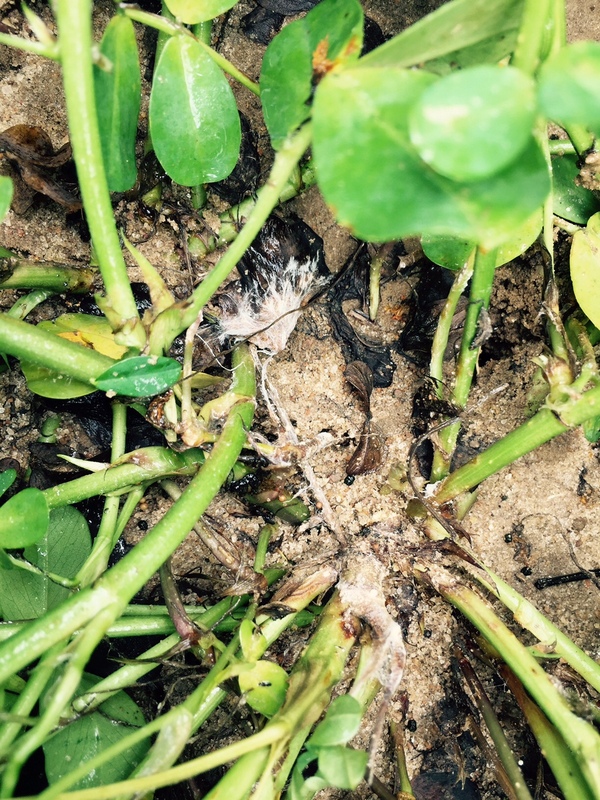Peanut Disease Bad in 2015
Rome Ethredge, Seminole County Extension Coordinator
I think 2015 was definitely one of the worse peanut white mold (Sclerotium rolsfii) years in history. High heat and frequent cloudy rainy periods caused it to be worse than usual. It was definitely a year that premium white mold products paid off.
Here are some comments from Dr. Bob Kemerait, UGA Extension Plant Pathologist, concerning white mold this year and what we can do.
Why do I have so much white mold in the field and did I get ANYTHING from my fungicide program?
Answer: I have been asked this question again and again, over and over this season. First, here are a few things to remember. The 2015 season has been very favorable for white mold, pushing all of our fungicide programs to the limits of performance. No program, no matter how much you spend, can control all disease in a field. I think 75% control may be all we can get sometimes. Couple warm temperatures with dry conditions and our dryland fields are, well, you know what I mean. Without rain or irrigation to wash the fungicides to the crown of the plant, performance and control are reduced. Our huge peanut acreage must mean that some of our fields are on a short rotation. Short rotation, hot temperatures and perhaps over-reliance on tebuconazole because of low peanut prices all add up to a white mold “field day”.
How do you know if your white mold program worked for you?
Answer: If you look out in a field and see a number of white mold “hits” you are likely to be disappointed. However, if such “hits” are contained to a one, maybe two plants and do not extend in streaks down the field, then you can be confident that your program was engaged and fighting for you. Also, if finding active white mold is difficult, then you can also be confident that your program was working for you. Note, however, that managing underground white mold is especially difficult because of getting the fungicide to the target below the soil surface. Underground white mold is difficult to control, even under the best of circumstances. Control may be improved with timely irrigation or rainfall, or by spraying the crop at night.
Is there anything I can do now to prepare for disease management in peanut next season?
Answer: Yes, there are several things. First, do your best to increase the number of years between peanut crops in a field. Second, identify the diseases that have been most problematic in your field and work with your county agent to develop a comprehensive management plan to include choice of variety and fungicides. Educate yourself on fungicides that are available now and those, such as Elatus, that will be available in 2015. Lastly, consider taking nematode samples and preparing for nematode management in 2016 with resistant varieties (Tifguard and Georgia-14N). Also, note that our current predictions are for a strong El Niño this winter, bringing increased rainfall and cooler temperatures. Growers should anticipate how such will affect disease management in all of their crops to include delays in planting or in application of Telone II.
(Source: Growing Georgia)

